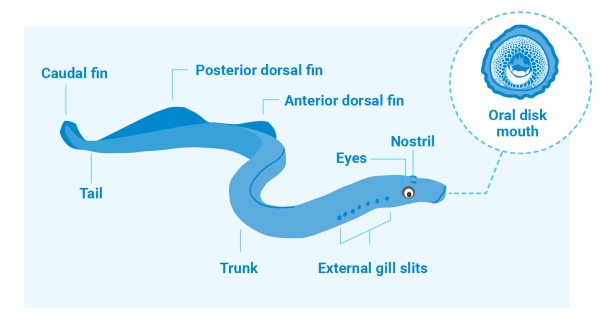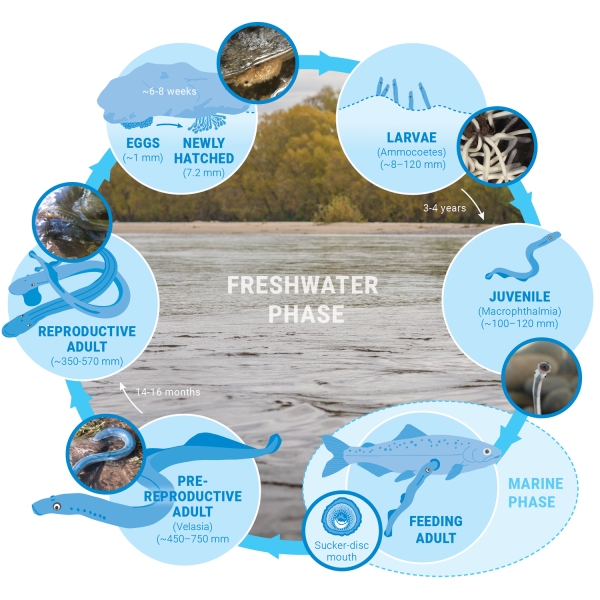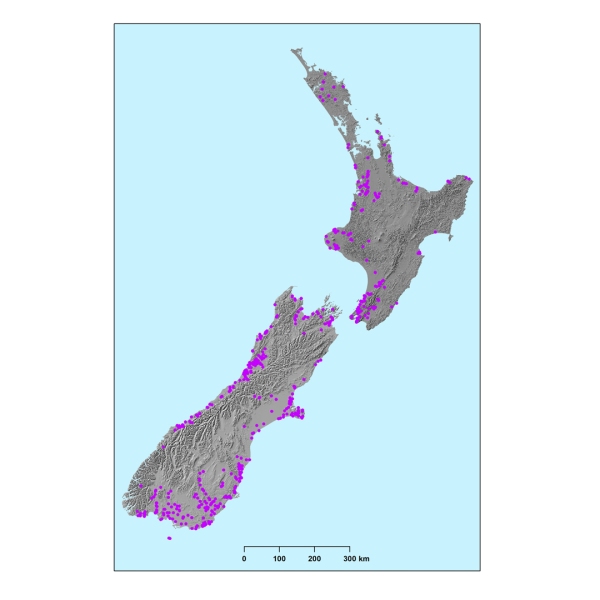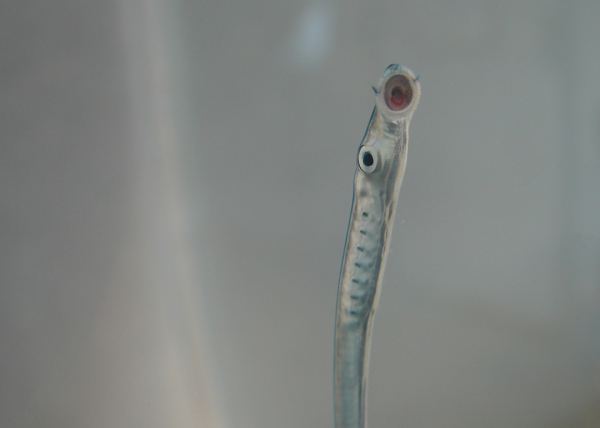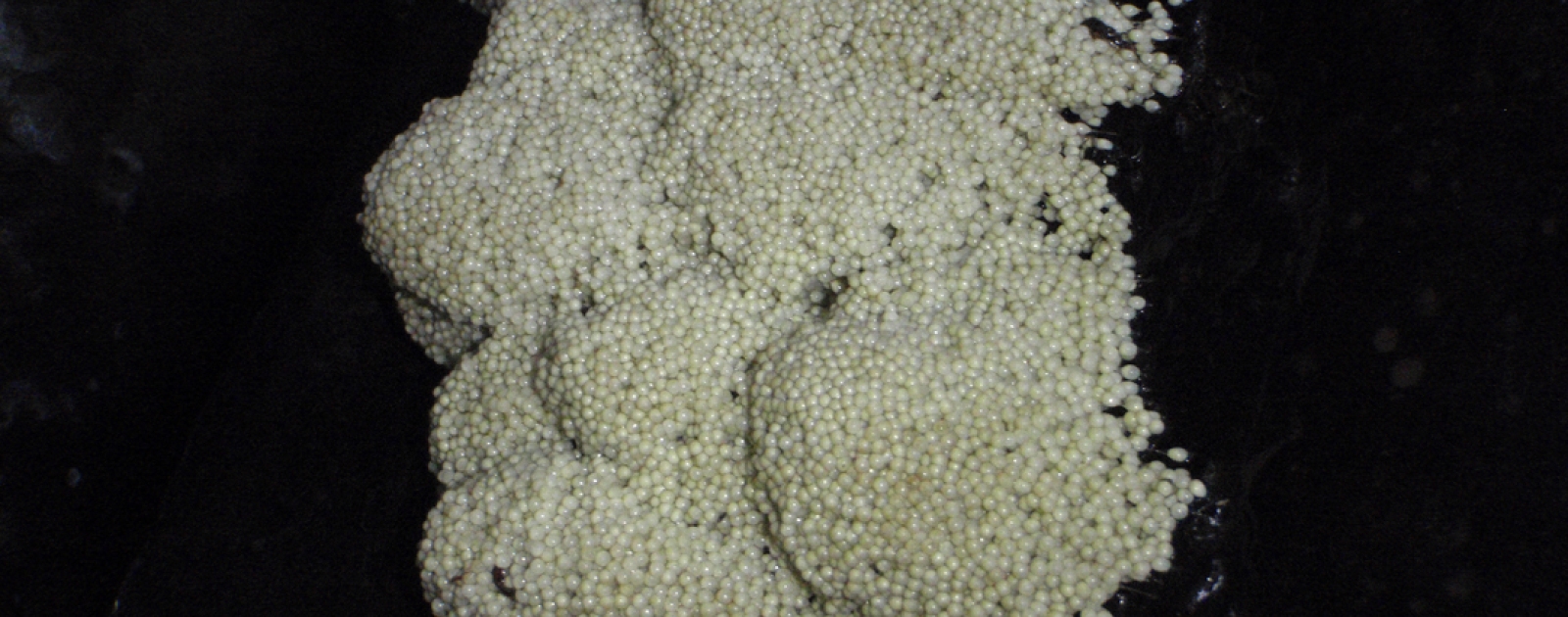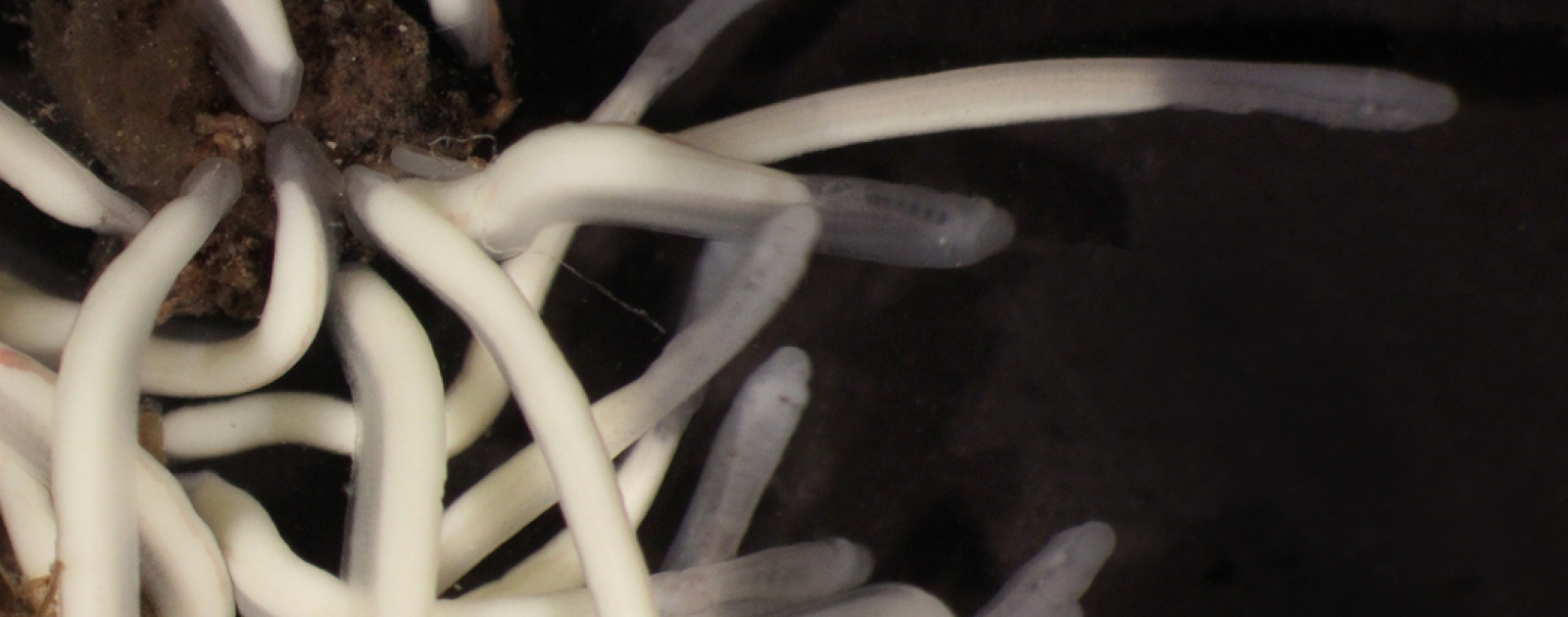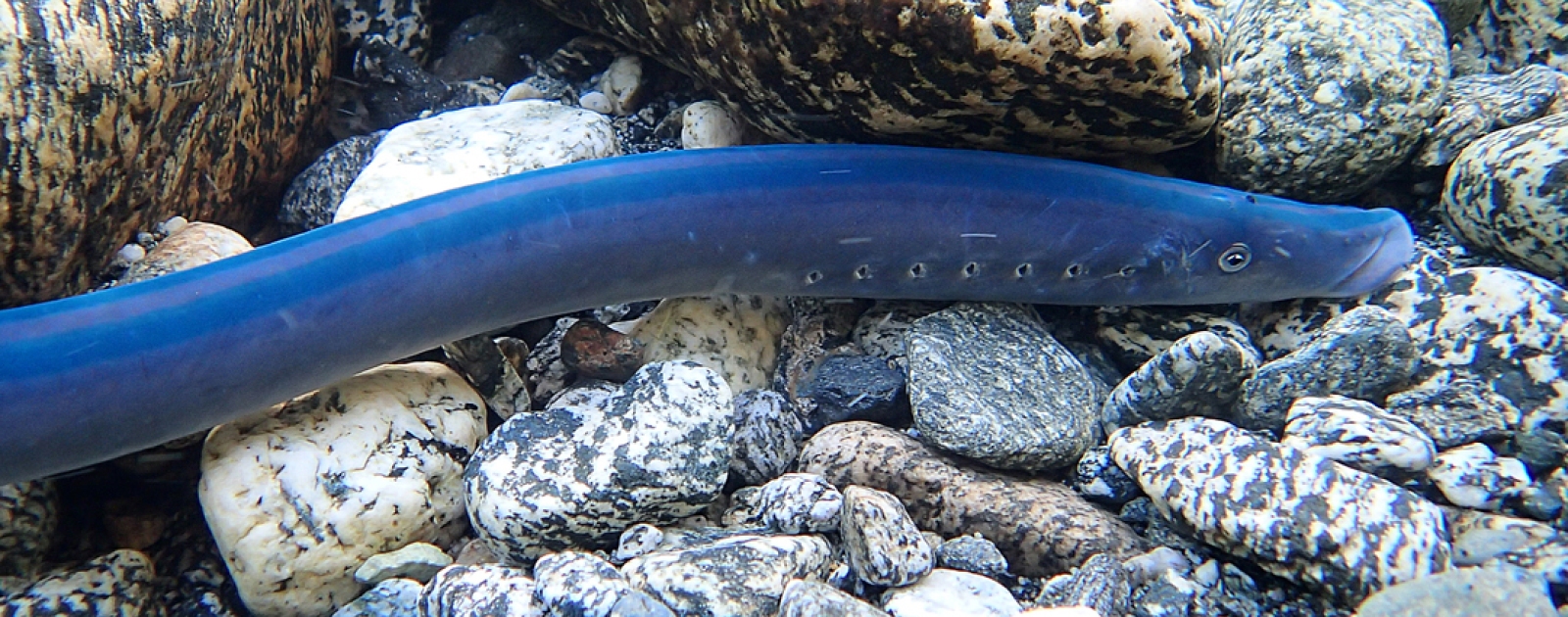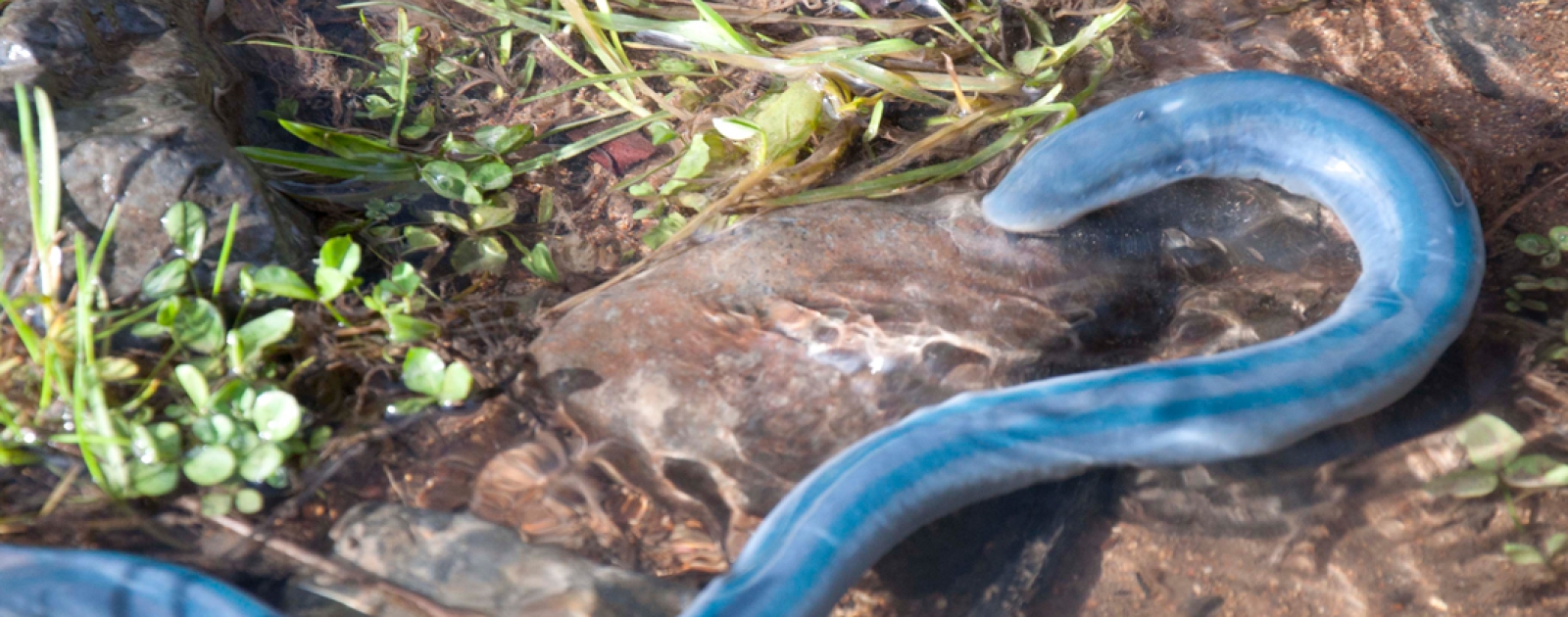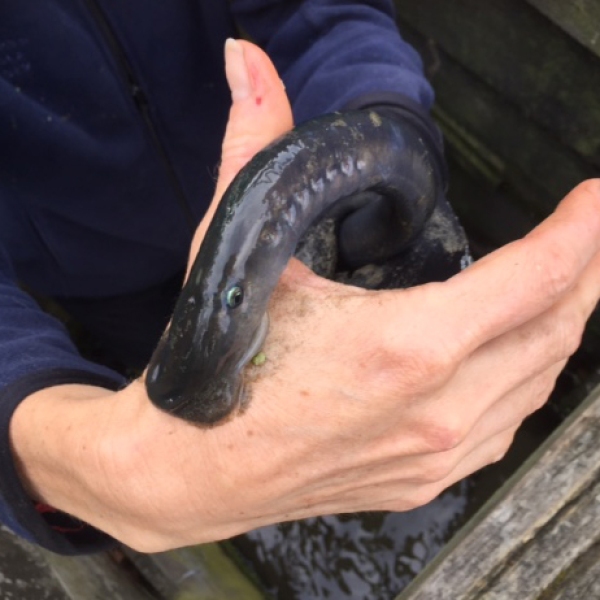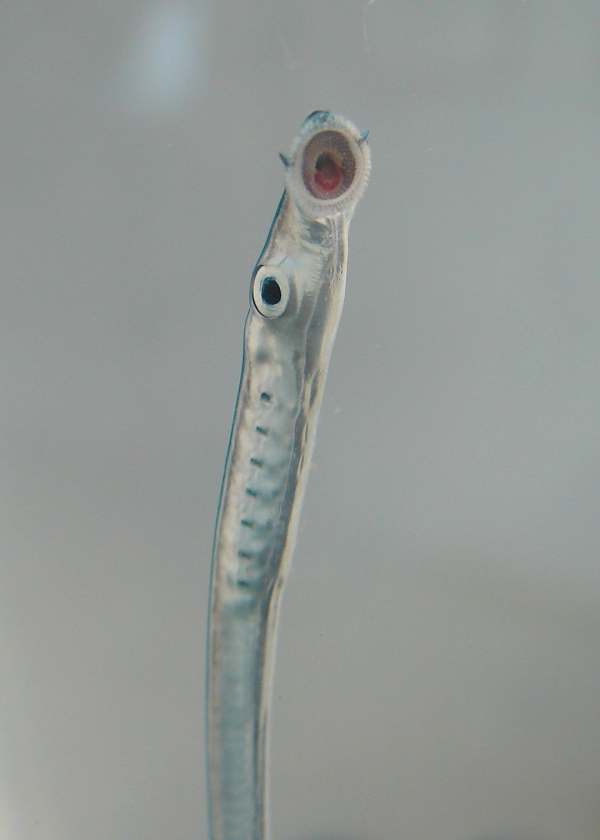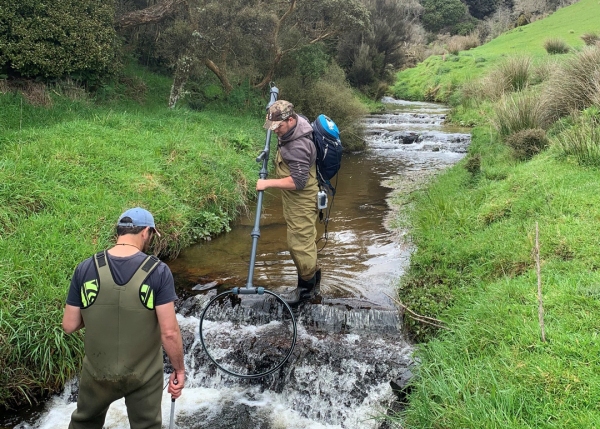Taonga species such as tuna (freshwater eel), kōura (freshwater crayfish) and kākahi (freshwater mussels) are central to the identity and wellbeing of many Māori.
For generations these species have sustained communities and helped transfer customary practices and knowledge from one generation to the next.
However, many communities are reporting that both the abundance and size of these freshwater taonga are declining. Te Kūwaha, NIWA’s National Centre for Māori Environmental Research has been working with whānau, hapū and iwi for more than a decade to co-develop methods for the protection, restoration and economic development of these species.
What is a piharau?
Our native piharau (Geotria australis) were around long before the dinosaurs, with fossil records dating back 360 million years.
They can be found throughout New Zealand, in western and southern Australia and South America.
Piharau (also known as kanakana) are anadromous, which means they start their lives in freshwater streams, before migrating to sea after three to four years. They only return to freshwater to breed.
Relatively little is known about the biology of piharau even though they are an important traditional fishery for Māori communities – elaborate weirs were, and still are, constructed to catch them.
In the ocean, piharau are bright blue with two darker blue racing stripes along their backs. When they enter freshwater their colouration fades to a dull brown.
Piharau are a very ancient fish that are unique in many ways. They don’t have any bones, and, like sharks, their skeleton is made entirely of cartilage.
Piharau are a similar shape to an eel but have a large circular, toothed sucker (oral disc) instead of a jaw.
They feed on fish or marine mammals as adults by attaching their oral disc to the animal’s body and using their toothed tongue to bore into the flesh of their prey to suck their blood, flesh and body fluids. Like sharks, lamprey breath through seven gills on each side of their head.
Piharau have only one nostril but their olfactory organ (nose) is large relative to their head size and their sense of smell is extremely sensitive. They can detect odours at concentrations less than 0.0000000005 grams per litre, or 1 teaspoon in 4,000 Olympic swimming pools!
Life Cycle
Piharau start life in freshwater, grow to adulthood in the sea but returns to freshwater to breed. We don’t know exactly how long they live but think their lifespan is between 10-20 years.
- Eggs & newly-hatched October–November Approximately 55,000 creamy-white eggs are deposited in a cluster under a large boulder or bedrock. Hatchlings remain attached to boulder substrate for approximately 2 weeks before they disperse.
- Postspawning mortality (over 3 months after spawning) Spawned adults die as a part of their life cycle.
- Larvae Worm-like piharau larvae called ammocoetes burrow into soft sediment where they filter-feed before transforming into juveniles.
- Juveniles Autumn–Winter Larvae transform into juveniles called macrophthalmia with developed eyes and a suckermouth. At the end of this period, they leave the freshwater environment and head for the sea.
- Feeding adult (3-4 years) Young adults attach to fish or whales using their suckermouth and feed parasitically as they grow into adults.
- Pre-reproductive adult April–October Bright blue, silver-bellied piharau cease feeding, migrate upstream (approximately 200km, >300m elevation) during which they turn brown, and hide under boulders before moving to spawning habitat.
- Reproductive adult October–November Spawning piharau have shrunk to 2/3 in size. Males develop a gular pouch and females a gravid abdomen.
A unique spawning phase
The freshwater spawning phase for piharau of around 15 months is the longest of any lamprey species worldwide.
Unlike other lampreys where males enter the freshwater first and create a nest to attract females, both sexes of piharau enter freshwater together.
In migrating towards a suitable spawning habitat piharau use their sucker-like mouth to climb over dams, waterfalls and other structures. The adults mainly migrate at night, when river levels fall after flood flows.
Spawning streams are thought to be selected based on the presence of larvae, where adult piharau use their sensitive sense of smell to detect the chemical odours that only lamprey release. Using larval odours as a migration cue is a clever way for adults to select spawning streams that have an abundance of nursery habitat for larval growth.
As they mature over the 15 months in freshwater, piharau don’t feed and remain hidden in riverbeds or within riverbanks. They will shrink during this time, losing around a third of their length as they become sexually mature.
The reproductive strategy of piharau is unique among lamprey species with adult lamprey forming spawning pairs in concealed cavities that minimise predation, with good water flow and that have hard surfaces for egg-laying.
Both the male and female piharau survive spawning for more than 15 weeks before dying. Egg development takes approximately seven weeks with both sexes aggressively guarding the nest. After hatching, larvae remain within the nest for two weeks before dispersing into the stream environment and burrowing into the sandy substrates.
Piharau distribution
Although lamprey are distributed across New Zealand, their abundance declines the further north you travel.
Populations are most commonly found in freshwater habitats in the South Island.
The largest numbers of piharau observations are around Te Pātaka o Rākaihautū (Banks Peninsula), Otago, and Murihiku (Southland).
They can penetrate inland to altitudes of over 300m. Piharau tend to be underrepresented in standard fish surveys because they are hard to catch and may be more widely spread than we currently know.
The first spawning nest for piharau was discovered as recently as 2013. By 2020 only two spawning sites had been discovered in the Southern Hemisphere, both in New Zealand rivers.
What do piharau eat?
Piharau begin their life as filter-feeders living on passing nutrients and other stream debris.
As ocean-living adults, they feed on the blood and body juices of fish and even whales. Like mosquitoes, lamprey secrete an anticoagulant that stops blood from clotting as quickly, keeping it flowing for longer. They stay attached to their prey for months (there is a chance the fish victims will die from blood loss or wound infections).
On their return to freshwater environments to spawn they do not eat and live off their muscle and fat reserves for around 15 months.
What eats piharau?
Shags and eels are known to be keen predators of adult piharau while in freshwater. While ocean predators of piharau are currently unknown there are accounts of lamprey being preyed upon by tuna and seals. Adult piharau can be caught as bycatch in whitebait and commercial eel nets.
What are the threats?
In the past piharau were seasonally abundant in many New Zealand rivers and as a prized delicacy for many Māori were taken in huge quantities.
Piharau are impacted by multiple pressures including:
- Habitat loss through land-use change, loss of riparian vegetation, drainage of wetlands and swamps and the effects of pest plants
- Barriers in waterways – dams, culverts, weirs, stopbanks, flood gates and river or lake mouth closures
- Contaminants, such as pesticides in waterways
- Predation from shags and eels
- Parasites and disease including Lamprey Reddening Syndrome which causes bleeding underneath the skin seen as red marks on the fins, along the body and eyes
- Harvesting including customary fishing and as a bycatch of the whitebait and tuna fishery. Concern over the state of the customary fishery has led some mana whenua to initiate examining customary harvest methods to better monitor lamprey abundance.
Climate change may also affect piharau through the increasing stream and ocean temperatures, changing rainfall patterns, ocean currents, and salinity.
The latest New Zealand Threat Classification System assessment has classified Geotria australis populations as ‘Threatened – Nationally vulnerable’
How can we help piharau?
Lamprey are very sensitive to pressures during their juvenile and sexually maturing adult life stages.
- Protect, restore and create piharau habitat. For example, fencing and planting our waterways provide protection, shading and instream habitat for piharau populations
- Provide good freshwater quality
- Remove pest fish species and invasive aquatic weeds
- Follow harvest regulations and any rāhui in place
Download
- Piharau: What does science tell us about New Zealand lamprey? (PDF 3.21 MB)
- Piharau lifecyle poster (PDF 2.11 MB)
Taonga Species Series

